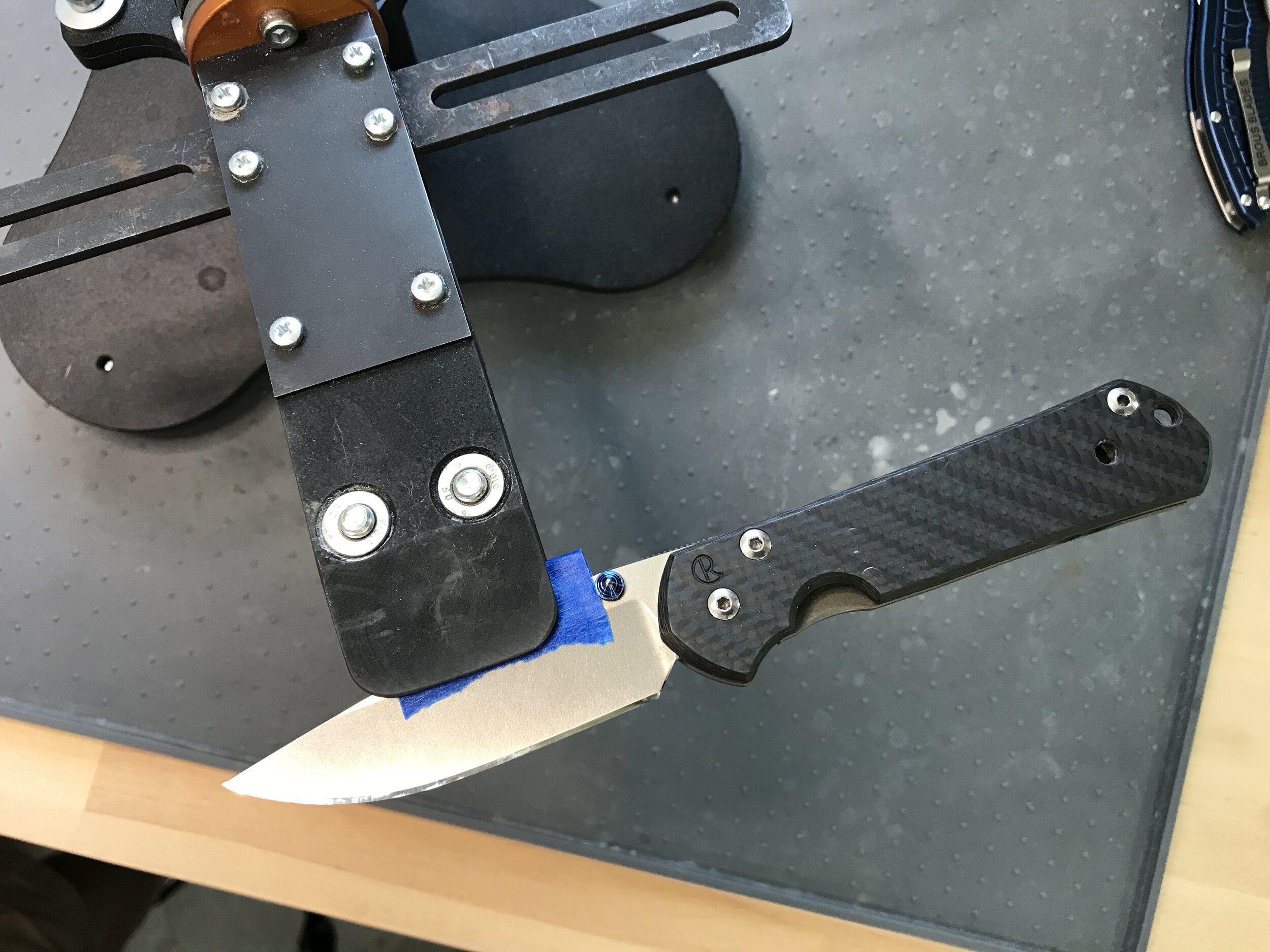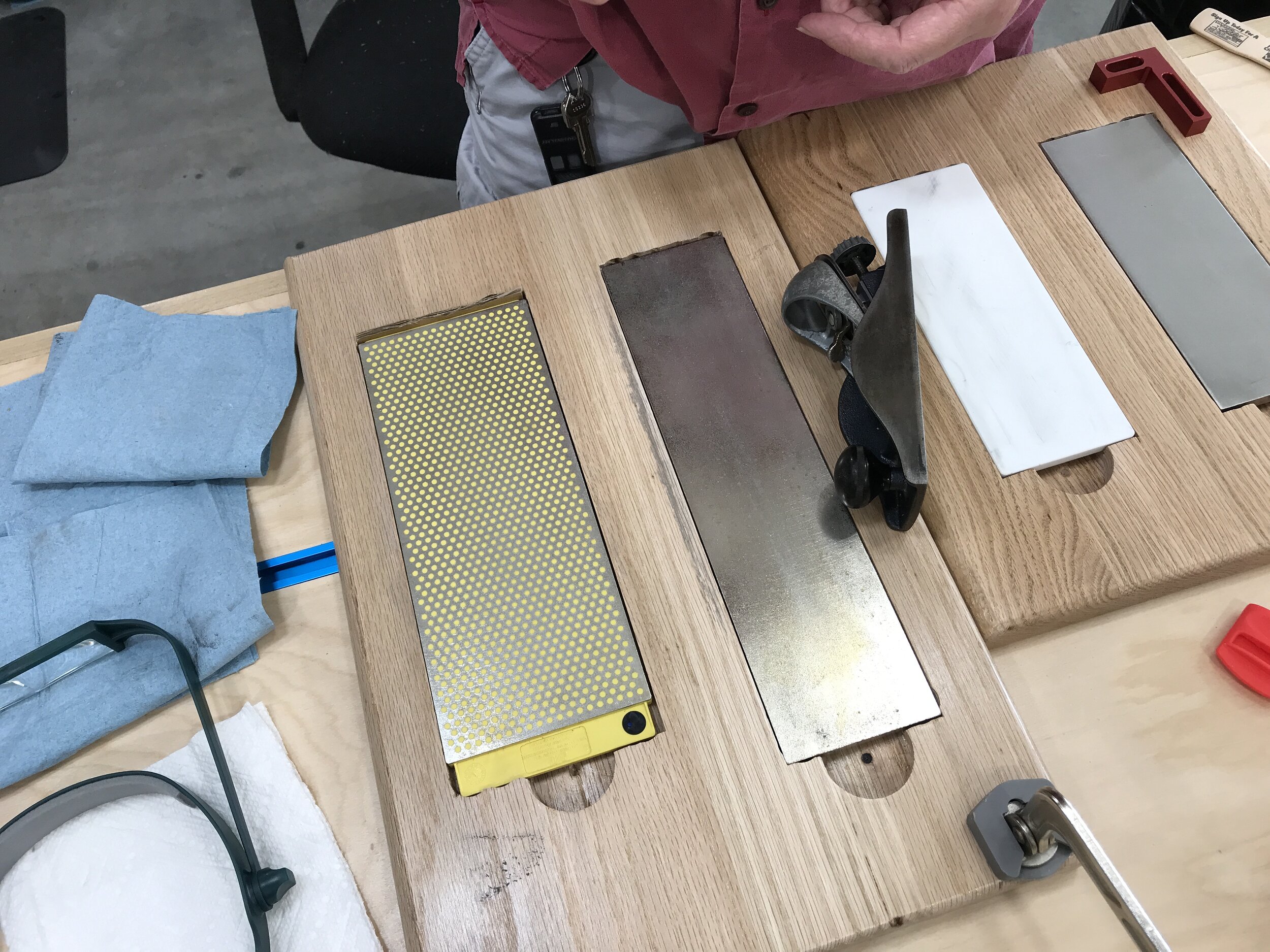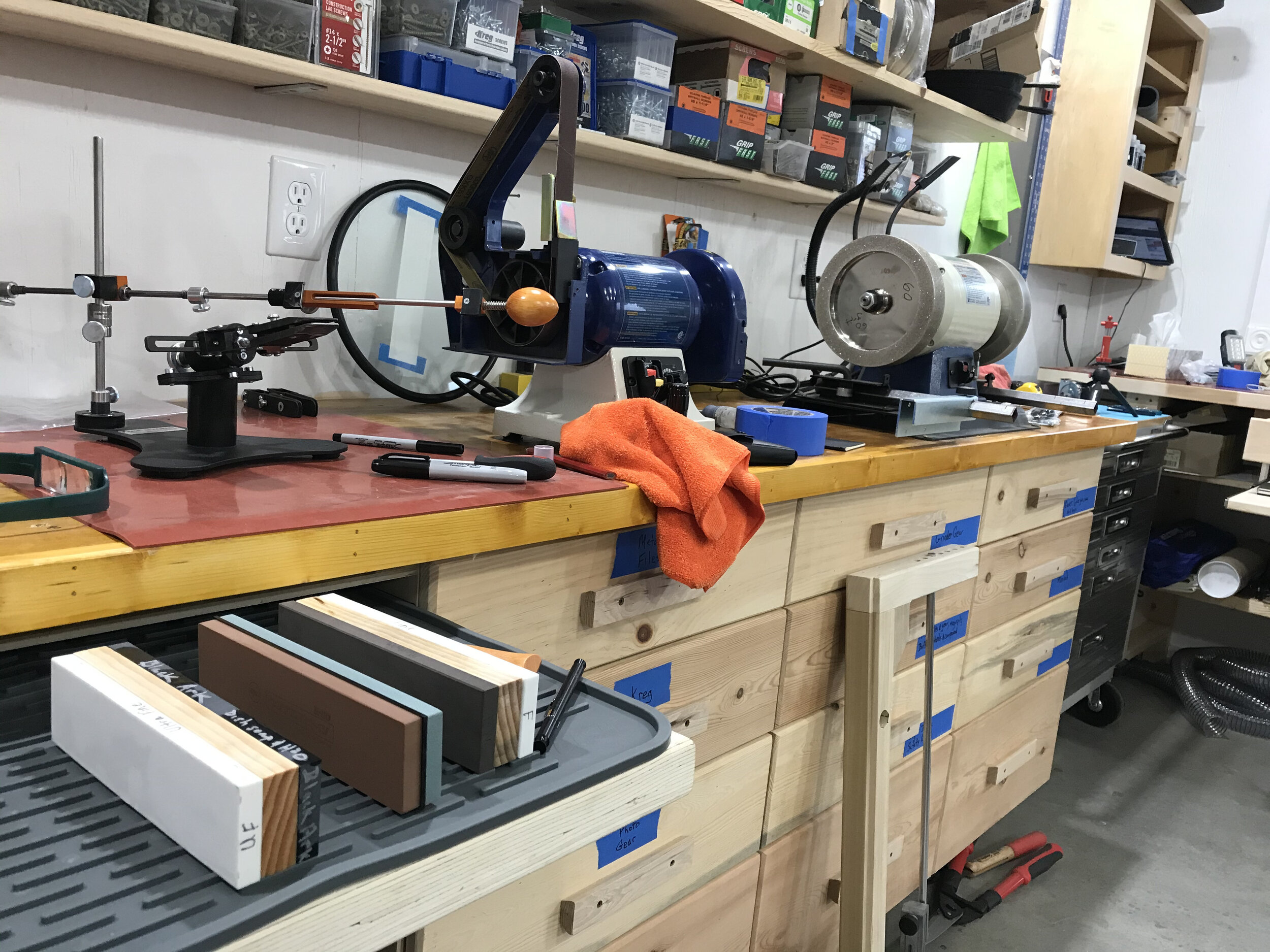
Sharpening Methods
I sharpen many knives and tools by hand, although I also use power tools frequently. The primary drawback to sharpening by hand is that it is often slower than sharpening with power tools, although in some cases I can more accurately tailor an edge to a customer’s needs when sharpening by hand. For instance, you may want a “toothy edge” on a kitchen knife used to cut raw meat or tough-skinned fruits and vegetables. On the other hand, you may want a polished and extremely sharp edge to cut sushi or sashimi, or to carve a turkey. Carpenters may prefer a relatively obtuse and/or toothy edge for work on a construction site, while carvers and other woodworkers will need an edge with an acute angle for more refined work. Such distinctions can be achieved with a belt grinder but may be better suited to freehand sharpening. In addition, hand sharpening may run less risk of overheating the blade steel.

KNIFE SHARPENING - METHODS
Depending on steel type and other factors, larger kitchen knives, cleavers, hunting & fishing knives are sharpened either on belt grinders or free hand on a variety of water stones or diamond plates and honed on leather strops.
Smaller knives may also be sharpened free hand but typically are sharpened on Hapstone or TSProf jigs to precise angles using water stones, ceramic or silicon carbide stones, diamond or CBN plates, and honed on leather strops.
Slow-speed grinders w/ CBN wheels, a Tormek water-cooled grinder w/ diamond wheels, and various other tools are also used for repairing, reprofiling and sharpening knives and other tools.

Edged Tools: Sharpening tools & methods
Pet grooming clippers are sharpened on a Nebraska Machine CS-10. Ceramic cutters are sharpened by hand on diamond plates or stones.
Yard tools are sharpened using a variety of tools including belt grinders, metal files and diamond files. Axes and hatchets are sharpened with a combination of belt grinders, files, and perhaps finished with strops or a buffer depending on usage and desired outcome.
Woodworking and carpentry tools may sharpened by hand with diamond plates and/or water stones and ceramic stones, a water-cooled Tormek T8, and/or belt grinders. Leatherworking and carving tools come in a variety of shapes and are sharpened and polished by hand using an assortment of slips, files, waterstones, sandpaper, CBN rods, and so forth.
Lawnmower blades are sharpened using an All American 5005 Gen 2 jig and a right angle grinder.
Scissors are sharpened on a Twice as Sharp grinder or, in rare cases by hand on a Hapstone or TSProf jig.